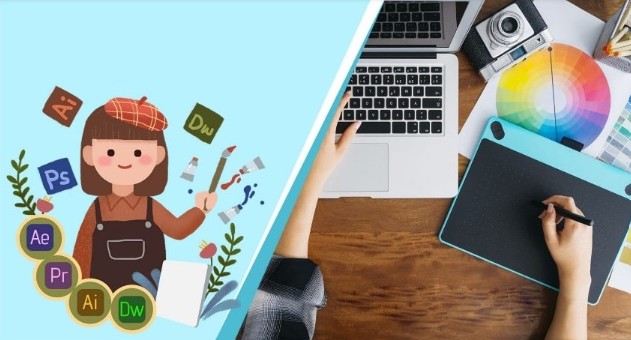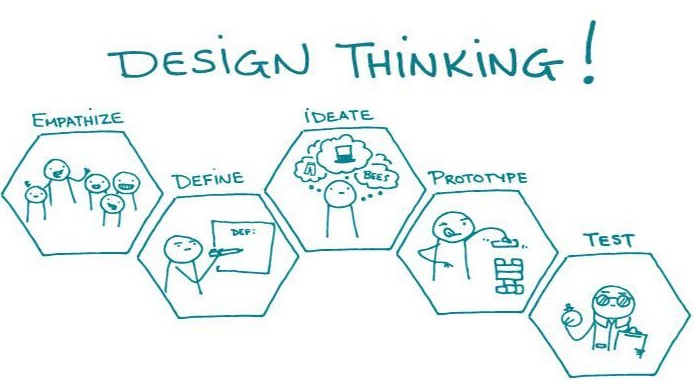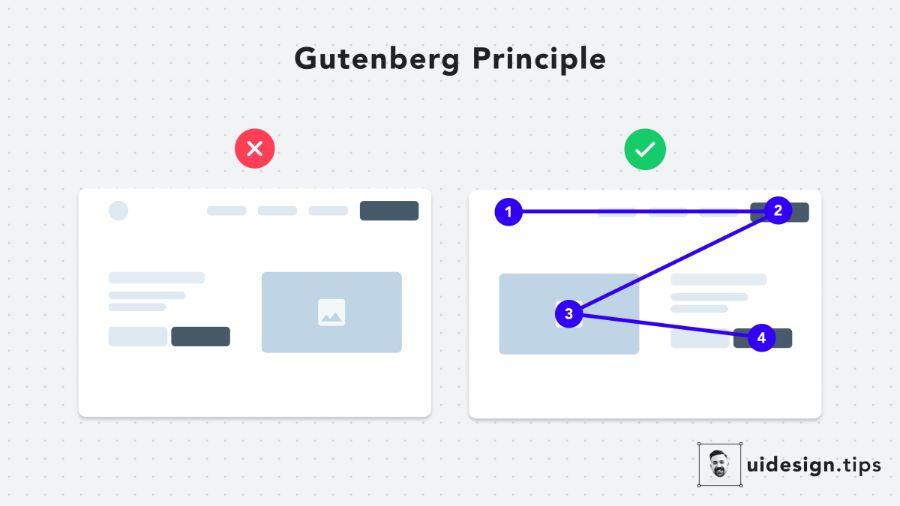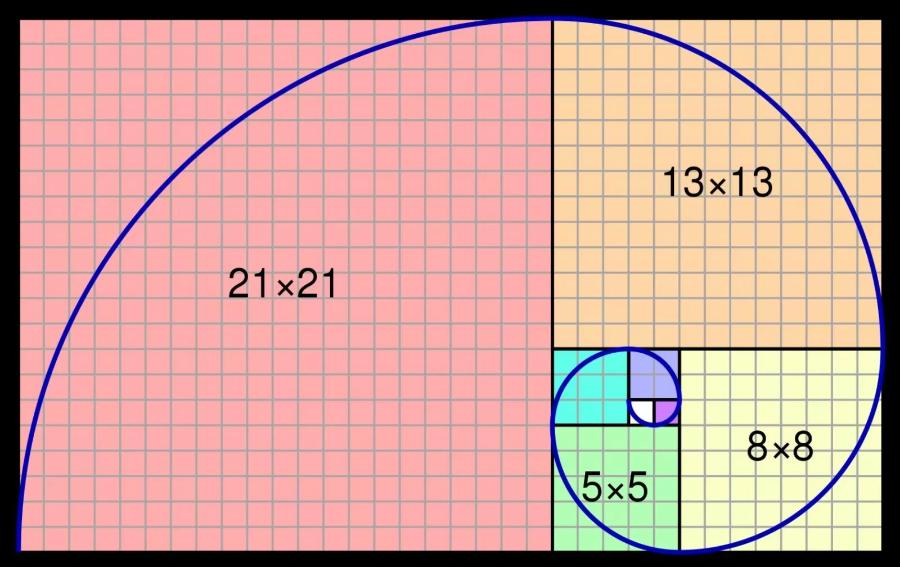Best Selling Products
Distinguishing Graphic Design and Multimedia – Don't Get Confused!
Graphic design is the art and technique of using images, type, and other visual elements to convey a message or create a visual product. Multimedia design is the combination of different types of content, including text, images, audio, video, animation, and interactive elements to create a rich, multisensory experience for the user.

Design is not just about creating beautiful images but also an important bridge between brands and users. Among the myriad of specialized terms, the two concepts of graphic design and multimedia design are often mentioned as two "brother" fields in the creative industry. However, many people still confuse these two concepts. So what is the core difference between graphic design and multimedia design? In this article, SaDesign will analyze with you in the clearest and easiest way to understand the difference between these two fields so that you can shape the most suitable direction for your creative path.
1. How are graphic design and multimedia design different?
1.1. What is graphic design?
Graphic design is the art and technique of using images, text and other visual elements to convey a message or create a visual product. It focuses on creating static products, such as logos, posters, packaging, website interfaces, etc., with the aim of attracting attention, conveying information and building brand identity.
1.2. What is multimedia design?
Multimedia design is the combination of different types of content, including text, images, audio, video, animation and interactive elements to create a rich and multi-sensory experience for users. Multimedia design goes beyond static images and harnesses the power of dynamic and interactive elements to create more vivid and impressive experiences.
.png)
2. Detailed analysis of each field
2.1. Graphic Design
Graphic design is the process of creating and combining visual elements, including images, type, color, and shape, to convey a specific message to a target audience. Graphic design is characterized by its focus on creating static visuals, meaning designs that do not move or change in real time. The main goal of graphic design is to communicate messages clearly, effectively, and attractively, while creating a strong and professional visual impression.
2.1.1. Types of graphic design
Graphic design includes many different types, each serving different purposes and audiences:
Brand Identity Design: Building a brand's image and personality through logo design, brand identity system, color palette, primary font, and guidelines.
Print Design: Creating printed products such as brochures, flyers, posters, catalogs, product packaging, business cards, magazines, newspapers, etc. for the purpose of advertising, communication and providing information.
Web/App UI Design: Focuses on designing the user interface (UI) for websites and mobile applications, including layout, images, colors, fonts, icons, and other interactive elements. The goal is to create a user experience (UX) that is intuitive, easy to use, and aesthetically pleasing.
.png)
Advertising Design: Design advertising products such as banners, posters, social media visuals, etc. to attract the attention of potential customers and promote purchasing behavior.
Infographic Design: Presenting complex data and information in a visual, understandable and engaging way through the use of charts, figures, illustrations and other graphic elements.
2.1.2. Necessary skills of graphic designers
To be successful in the field of graphic design, a designer needs to equip himself with the following skills:
Layout: The skill of arranging visual elements in a harmonious, balanced and aesthetically pleasing way, creating a visually appealing and readable whole.
Color Theory: Understanding the principles of color matching, how to use color to create emotions, attract attention and convey messages.
Typography: The skill of selecting and combining different fonts to create text that is aesthetically pleasing, easy to read, and appropriate to the message being conveyed.
.png)
Using design software: Proficient in professional graphic design software such as Adobe Photoshop, Illustrator, InDesign, etc. to create high-quality design products.
Creative Thinking: The ability to come up with new, unique ideas and solve problems creatively.
Understanding Visual Principles: Master the principles of balance, contrast, rhythm, proportion, emphasis, etc. to create harmonious and aesthetically pleasing designs.
2.2. Multimedia Design
Multimedia design is the field of combining different forms of content, including text, images, audio, video, animation, and interactive elements, to create a rich and engaging multisensory experience for the user. Unlike graphic design, which focuses on static images, multimedia design leverages the power of multimedia, which means combining multiple types of content to convey messages more effectively and creatively. The goal of multimedia design is to create interactive experiences that entertain, educate, and inform in a vibrant and accessible way.
.png)
2.2.1. Types of multimedia design
Animation: Using graphic techniques to create the illusion of movement for still images. Includes 2D, 3D animation, motion graphics, etc.
Video Production: Producing video products such as short films, promotional videos, marketing videos, instructional videos, music videos, etc.
Sound Design: Creating and editing sounds, including background music, sound effects, dialogue, etc. to enhance the appeal and convey the message of multimedia products.
Interactive Design: Designing products that allow users to interact directly, such as interactive websites, mobile applications, games, information kiosks, etc.
User Experience Design (UX/UI Design): Although it can stand alone as a discipline, UX/UI is an integral part of multimedia design, focusing on optimizing the user experience on digital platforms, ensuring usability, ease of use, and aesthetics. Essential skills of a multimedia designer:
Graphic Design Skills: A foundation in graphic design is very important, including layout, color, typography, etc.
.png)
2.2.2. Professional skills by multimedia type
Animation: Proficient in software such as After Effects, Animate, Blender, Cinema 4D,…
Video: Video filming and editing skills with Premiere Pro, Final Cut Pro, DaVinci Resolve,…
Sound: Use Audition, Logic Pro X, Pro Tools,… software to edit and create sound.
Interaction: Basic programming (HTML, CSS, JavaScript, ...), understanding of UX/UI, using interactive design tools.
Creative Thinking: Come up with new ideas and unique solutions.
Storytelling Ability: Build and convey compelling stories through images, sounds and content.
Teamwork: Multimedia design is often a team effort, requiring good collaboration and communication skills.
3. The Relationship Between Graphic Design and Multimedia Design
Graphic design and multimedia des.png) ign, although two separate fields, are closely related, intersecting and complementing each other.
ign, although two separate fields, are closely related, intersecting and complementing each other.
Graphic design is the foundation for multimedia design:
Multimedia design often uses the principles and techniques of graphic design as a foundation. Elements such as layout, color, typography, static images, etc. are all applied in multimedia design to create visual harmony and consistency. A good multimedia designer needs to have a solid knowledge of graphic design to be able to create high-quality products.
Multimedia design often includes and develops from graphic design:
Many multimedia design projects start with graphic design. For example, a promotional video might start with a storyboard, a form of graphic design. Or the user interface (UI) of a mobile app, a product of graphic design, is also an important part of the multimedia experience of that app.
The intersection and complementarity between the two fields:
These two fields support and complement each other to create more complete and effective products. For example, an interactive website (multimedia design) needs to have a beautiful and easy-to-use interface (graphic design). An animated video (multimedia design) needs character and background design (graphic design).
.png)
4. Comparison table of Graphic Design and Multimedia Design
Criteria
Graphic Design
Multimedia Design
Concept
Focus on communicating visual messages with static images.
Use a variety of media to create interactive experiences.
Main means
Static images (logos, posters, banners, brochures, books, magazines, etc.)
Animation (video, animation, GIF), audio, interaction (app, web, game)
Target
Communicate, build brand, attract attention.
Create engaging, interactive, entertaining or educational experiences.
Interactivity
Almost none (except in some cases of static web design).
High, usually requires user response action (click, tap, drag,…)
Required Skills
Layout, color, typography, images.
Use graphics software (Photoshop, Illustrator, InDesign).
Basic graphic skills (layout, color).
Video, animation and audio making skills.
Basic web/app programming (HTML, CSS, JavaScript).
Interactive design thinking (UX/UI).
Product
Logo, brand identity.
Posters, flyers, banners.
Packaging and publication design.
Static web interface design (usually in conjunction with programmers).
Video, short film, TVC.
Animation, animated infographic.
Website, mobile application.
Game
Interactive slideshow.
Application
Advertising, marketing.
Publishing, printing.
Media, press.
Brand, product.
Entertainment (games, videos, animation).
Education (e-learning, learning applications).
Marketing (interactive advertising, video marketing).
Shows, exhibitions, events.
Tools
Adobe Photoshop, Illustrator, InDesign, CorelDRAW.
Adobe Premiere Pro, After Effects, Audition, Animate, Cinema 4D.
Unity, Unreal Engine.
Web design software, app.
SaDesign hopes that this article has helped you have a clearer view to choose or flexibly combine these two fields in your own creative journey!












































